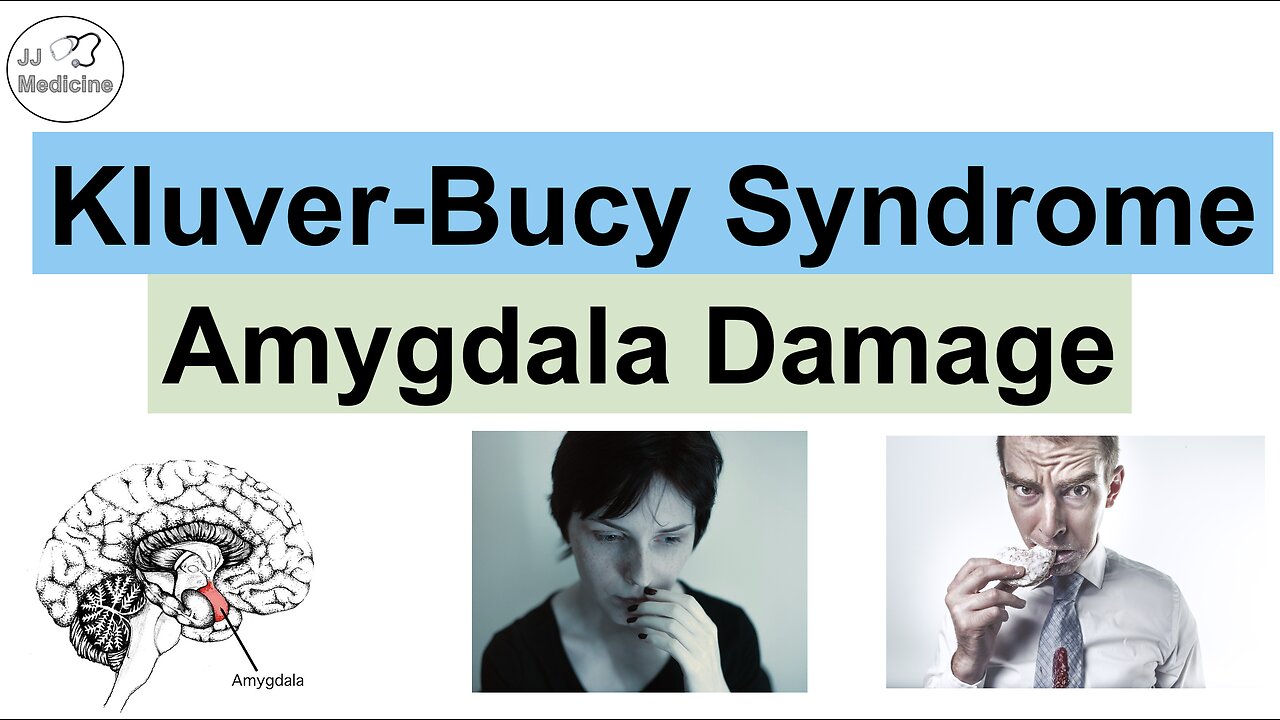Premium Only Content

Kluver-Bucy Syndrome | Causes, Pathophysiology, Signs & Symptoms, Diagnosis, Treatment
Kluver-Bucy Syndrome | Causes, Pathophysiology, Signs & Symptoms, Diagnosis, Treatment
Kluver-Bucy Syndrome (KBS) is a neurological condition due to bilateral damage to both amygdala of the brain, leading to characteristic signs and symptoms. This damage to amygdalae can be due to many factors, including herpes simplex virus encephalitis, dementia and stroke. In this lesson, we discuss what KBS is, what causes it, the signs and symptoms, how it’s diagnosed and how it’s treated.
I hope you find this lesson helpful. If you do, please like and subscribe for more lessons like this one!
JJ
**MEDICAL LEGAL DISCLAIMER**: JJ Medicine does not provide medical advice, and the information available on this channel does not offer a diagnosis or advice regarding treatment. Information presented in these lessons is for educational purposes ONLY, and information presented here is not to be used as an alternative to a healthcare professional’s diagnosis and treatment of any person/animal. Only a physician or other licensed healthcare professional are able to determine the requirement for medical assistance to be given to a patient. Please seek the advice of your physician or other licensed healthcare provider if you have any questions regarding a medical condition.
-
 6:34:42
6:34:42
Rallied
7 hours ago $5.19 earnedWarzone Solo Challenges
70.5K2 -
 57:40
57:40
MattMorseTV
7 hours ago $9.26 earned🔴Trump just SHATTERED the RECORD.🔴
50.1K87 -
 43:39
43:39
WickedVirtue
4 hours agoLate Night Spooky Plays
29.9K2 -
 2:04:02
2:04:02
Glenn Greenwald
7 hours agoTrump and Rubio Apply Panama Regime Change Playbook to Venezuela; Michael Tracey is Kicked-Out of Epstein Press Conference; RFK Senate Hearing | SYSTEM UPDATE #508
106K127 -
 58:36
58:36
Total Horse Channel
9 hours ago2025 CSI3* A Coruña Porsche - Grand Prix
25.7K -
 2:10:32
2:10:32
megimu32
5 hours agoOTS: Mighty Morphin Power Rangers & the 90s Movie That Defined a Generation
23.7K12 -
 1:14:53
1:14:53
Badlands Media
20 hours agoTHE SITREP Ep. 128: Gun Rights, Sleep Paralysis, and Venezuela Cartel Strikes
42.4K11 -
 2:44:56
2:44:56
BubbaSZN
6 hours ago🔴 LIVE - FORTNITE WITH NEW KEYBOARD
15.5K1 -
 2:17:29
2:17:29
Mally_Mouse
6 hours agoThrowback Thursday! Let's Play: Cuphead
20.9K1 -
 5:38:23
5:38:23
StevieTLIVE
6 hours agoWarzone HYPE Duos with GloryJean
13.6K1